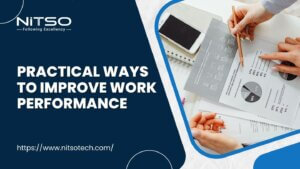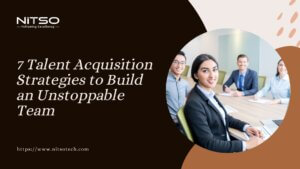Table of Contents
Why Pre-Employment Screening Software Matters
Pre-employment screening software refers to the use of technology tools and systems to screen, evaluate, and assess candidates during the hiring and recruitment process. This can include conducting automated background checks, verifying past employment and education, checking legal eligibility, as well as administering skills assessments, behavioural evaluations, and more.
Implementing quality pre-employment screening has always been vital for organizations, but conducting it manually can be extremely inefficient and vulnerable to human error. Modern advancements in this type of HR technology enable companies to streamline screening at scale while reducing risks and improving hiring outcomes.
According to recent surveys, over 90% of mid-size to enterprise employers now leverage some form of applicant tracking system with embedded background checks and screening functionality. This demonstrates how crucial it has become to utilize pre-employment screening software rather than attempt to manage manual workflows.
The most compelling reasons for businesses to adopt pre-employment screening platforms are to improve efficiency in the hiring process, reduce time-to-hire, make data-driven hiring decisions, and ensure regulatory compliance around background checks.
What is Pre-employment Screening Software?
Pre-employment screening software refers to specialized human resources tools that conduct various checks, verifications, and assessments on job applicants during the recruitment process. The general purpose is to validate candidates’ backgrounds, skill sets, and qualifications to ensure they are a good organizational fit before making hiring decisions.
These automated screening systems comprise several key components and capabilities:
- Background screening: This includes nationwide criminal record checks, identity verifications, education/employment history confirmation, financial/credit checks, drug testing, global sanctions screenings and more based on employer needs.
- Skills testing and assessments: Pre-configured skills tests, custom questions, and AI-enabled assessment engines allow recruiters to evaluate candidates beyond just resume items. This provides insights on on-the-job skills mastery to improve hiring decisions.
- Candidate analysis tools: Generating detailed applicant profiles based on screening data allows for easy side-by-side comparisons. Analytics and reporting provide deeper insights into past screening effectiveness as well as where talent pipelines show strengths or gaps.
- Workflow management: Core HR software and applicant tracking system (ATS) integrations enable moving candidates through various screening touchpoints for enhanced efficiency.
- Customization: Customization is vital so platforms can adapt to unique business needs across any industry type or location. Leading software vendors have global capabilities plus flexible configuration options. However, ease of use is still emphasized in setup and user experiences.
The combination of background verification, assessments, analytics, and smooth workflows powered by pre-employment screening systems delivers significant advantages over manual approaches to talent selection into critical roles. The depth of features as outlined transforms raw applicant data into actionable talent intelligence.
Key Features and Capabilities
Pre-employment screening platforms share several core functions but can vary widely in specific tools and depth of capabilities. Common key features include:
Automated Workflow Management
- Integration with ATS for a unified talent platform
- Custom branded candidate portals
- Configurable process flows and stages
- Automated eligibility checking and alert triggers
- Mobile capabilities for on-the-go review
Background Screening
- Criminal records checks supporting local, state, national and global searches
- Identity and SSN verification tools
- Automated education and employment verification
- Motor vehicle records and DOT compliance
- Global watchlist scanning for sanctioned individuals
Assessments Library
- Pre-built skills tests spanning software, sales, healthcare, and more
- Customizable question banks drawing from scientific libraries
- Physical ability and agility testing for applicable roles
- Diverse language support
Analytics and Reporting
- Real-time applicant tracking dashboard
- Screening performance reports
- Skills assessment analytics with head-to-head comparisons
- Adverse action and compliance reporting
Configurability and Customization
- Ability to toggle various background check components for each job template
- Custom assessment builder
- Vendor integration services and role-based permissions
Security
- Encrypted data in transit and at rest
- Regular third-party audits for security compliance
- User access and action logging
The depth of these features, especially around analytics and customization modules, is what enables modern pre-employment screening software to provide considerable improvements over manual approaches.
How Pre-Employment Screening Software Benefits Employers
Implementing a dedicated pre-employment screening solution delivers benefits from improved hiring outcomes, and enhanced legal compliance, to significant administrative efficiencies.
- Increased Efficiency – It automates manual screening tasks like background checks, verifications, and scheduling assessments. This speeds up hiring and lets recruiters focus on more strategic tasks.
- Compliance – Customizable platforms ensure screening compliance with EEOC, FCRA, ADA etc. This reduces legal risks in the hiring process.
- Improved Candidate Experience – Features like self-service portals, text reminders and mobile access create a smooth, convenient experience that attracts top talent.
- Analytics & Reporting – Reporting provides insights into the screening process and candidates. Analytics identify patterns to refine assessments and criteria over time.
- Cost Savings – Automating verifications in-house reduces third-party screening costs. Bulk package pricing also lowers per-candidate cost over manual screening.
- Customization – Employers can select from a wide range of screening checks and assessments to meet specific job needs, company culture and work environments.
- Data Security – Cloud-based platforms offer advanced security like encryption, access controls and data recovery to protect sensitive candidate information.
In summary, pre-employment screening software adds efficiency, compliance, analytics and customization that were previously unavailable, providing significant time and cost savings.
Factors to Account For in Adoption Decisions
While the implementation of pre-employment screening platforms is accelerating across all industries, some limitations persist, especially for smaller companies with limited budgets. Areas to consider include:
- Compliance – Ensure the system allows customization to meet EEOC, ADA, FCRA and other hiring compliance requirements.
- Data Security – Vet the vendor’s data security protocols like encryption and access controls to ensure the candidate’s personal information is protected.
- Customization – Evaluate screening customization options like assessments, background checks, drug tests and more to match company needs.
- Candidate Experience – Consider the candidate experience features like mobile compatibility, communications and self-service portals offered.
- Integration – Determine what applicant tracking or HRIS system integration is available to sync screening data with core platforms.
- Analytics – Review the reporting and analytics functionality to uncover useful hiring insights from screening data.
- Implementation Support – Assess the vendor’s implementation, training and ongoing support services to drive user adoption.
- Pricing Models – Compare pricing models (per-candidate, unlimited, tiered plans etc.) to quantify the ROI.
Evaluating these elements will help identify the best pre-employment screening platform for your budget, needs and talent acquisition objectives. For many small businesses, standalone background check services with minimal tools may provide ‘just enough’ functionality at lower costs.
Top 6 Best Practices for Implementation
The advantages of pre-employment screening platforms fully appear only when purposefully integrated into hiring operations and talent management strategies. Follow these best practices for deployment:
- Define your screening criteria upfront – Determine what attributes (skills, culture fit, etc.) are most important for candidates to have before implementing the software. This will help customize the system to your needs.
- Integrate with your ATS – Integrate the screening system with your existing applicant tracking system (ATS) for a seamless candidate experience and unified data.
- Automate basic verifications – Automate basic background checks and verifications for efficiency. This leaves recruiters more time for value-added screening.
- Use predictive analytics – Leverage artificial intelligence and predictive analytics to remove bias and find the best candidates. Screening software can benchmark tests and assessments.
- Enable self-service portals – Implement candidate self-service portals so candidates can schedule screenings and upload any required documents on their own time. This improves experience.
- Analyze results – Use pre-hire assessment reporting and analytics to continually refine your screening criteria based on predictive hiring data. Screening should evolve with your talent needs.
Implementing modern pre-employment testing is essential for hiring success. Following best practices for system integration, automation, and analytics will ensure your screening process is efficient, fair and continually optimized.
Top Pre-employment Screening Software
The market for pre-employment screening software contains dozens of solutions, but these 4 software stand out as top options to consider based on market adoption, feature range, and ease of use:
GoodHire
- Overview: A premium integrated screening option with background checks, skills assessments, and robust analytics.
- Key features: Custom packages and tools, fully compliant, and 5-minute average turnaround on most checks.
- Ideal for: Mid-market and enterprise employers seeking a full-featured platform.
Checkr
- Overview: Optimized for tech/on-demand hiring with applicant-initiated screening flows.
- Key features: Flexible à la carte ordering, global criminal searches in over 240 counties, and intelligent fraud detection.
- Ideal for: High volume and hourly hiring across all industries.
ClearStar
- Overview: Specialized in transportation, logistics, and gig economy hiring scenarios.
- Key features: Motor vehicle records (MVRs) validated in real-time and other transportation pre-employment checks.
- Ideal for: Transportation, distribution, and delivery focused companies.
HireRight
- Overview: A longstanding industry leader with one of the largest global screening footprints.
- Key features: 160+ country criminal record coverage, health screening, and customized assessment building.
- Ideal for: Complex global hiring programs with legal compliance demands.
The Future of Pre-employment Screening
The trajectory of pre-employment screening software points to continued innovations in analytics-powered talent intelligence and expanded self-service capabilities for candidates.
- Expanding Assessments – Screening assessments will expand beyond skills into culture add, cognitive abilities, emotional intelligence and more. This data will better predict candidate job fit.
- Integrated Platforms – Screening systems will integrate tightly with applicant tracking software and HRIS systems to create unified talent acquisition platforms. This will improve data sharing and analytics.
- Automation Growth – More screening tasks, like verifications and basic interviews, will become automated using AI chatbots, voice analytics and machine learning. This increases efficiency.
- Customization – Employers will be able to build fully customized screening programs with risk-scoring algorithms tailored to their unique needs and success factors.
- Candidate Experience Focus – Candidate self-service and communication automation will continue improving the experience and expanding access through mobile etc.
- Analytics Sophistication – Predictive analytics and machine learning will become more sophisticated, precisely matching candidates to ideal roles and predicting success.
- Legal/Compliance Automation – Platforms will better automate legal and compliance adherence through smart questionnaires and audit tools.
The future screening market will be defined by integrated, automated and intelligence-driven systems that provide predictive insights while ensuring a positive candidate experience. The process will continually optimize.
Key Takeaways for Leveraging Pre-Employment Screening Software
While the process of screening applicants has always been crucial for employers, modern pre-employment screening software enables data-driven, ethical, and automated enhancements over manual review. Selecting pre-employment screening software with predictive analytics, flexible background checks, skills assessments, and smooth applicant tracking system integrations ensures an end-to-end solution that evolves alongside future needs through continuous improvements.
The most important thing is for the company to agree on which roles are the hardest to fill. Then, figure out exactly what features of the screening software will help fill those roles. Doing this allows the company to get the most value out of the screening software. The software is becoming more and more necessary for hiring the right talent.








0 Comments